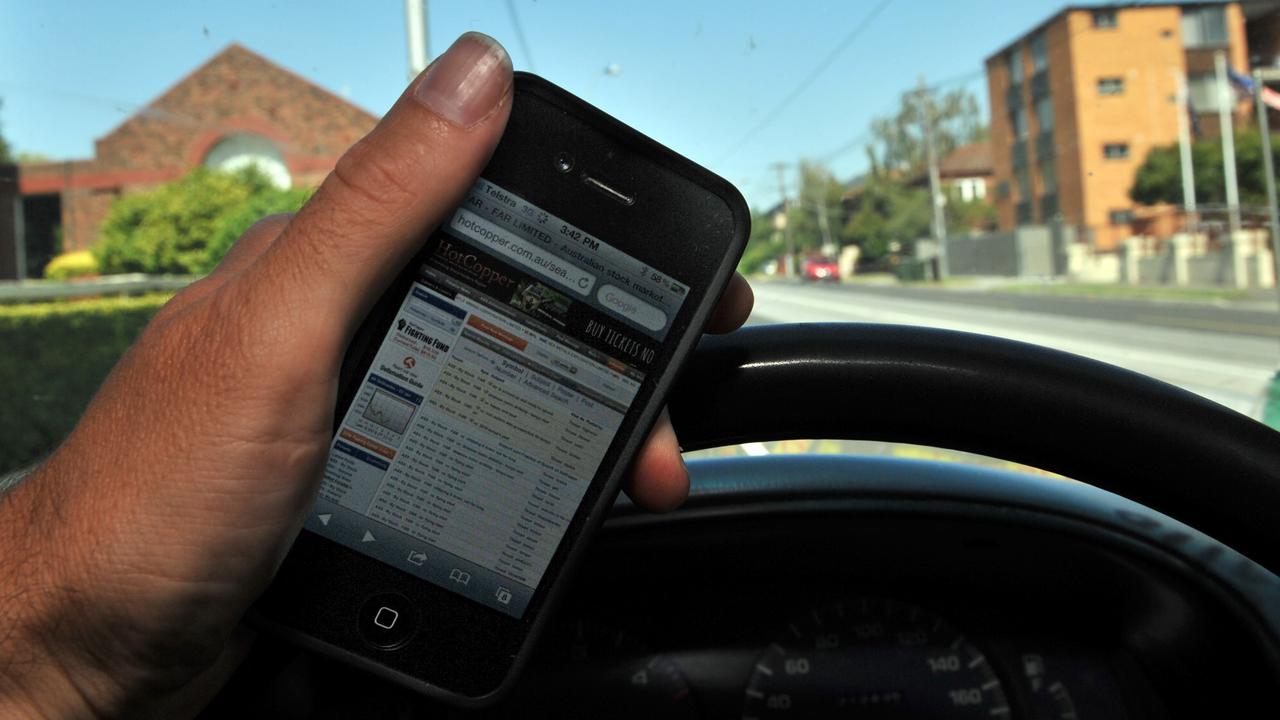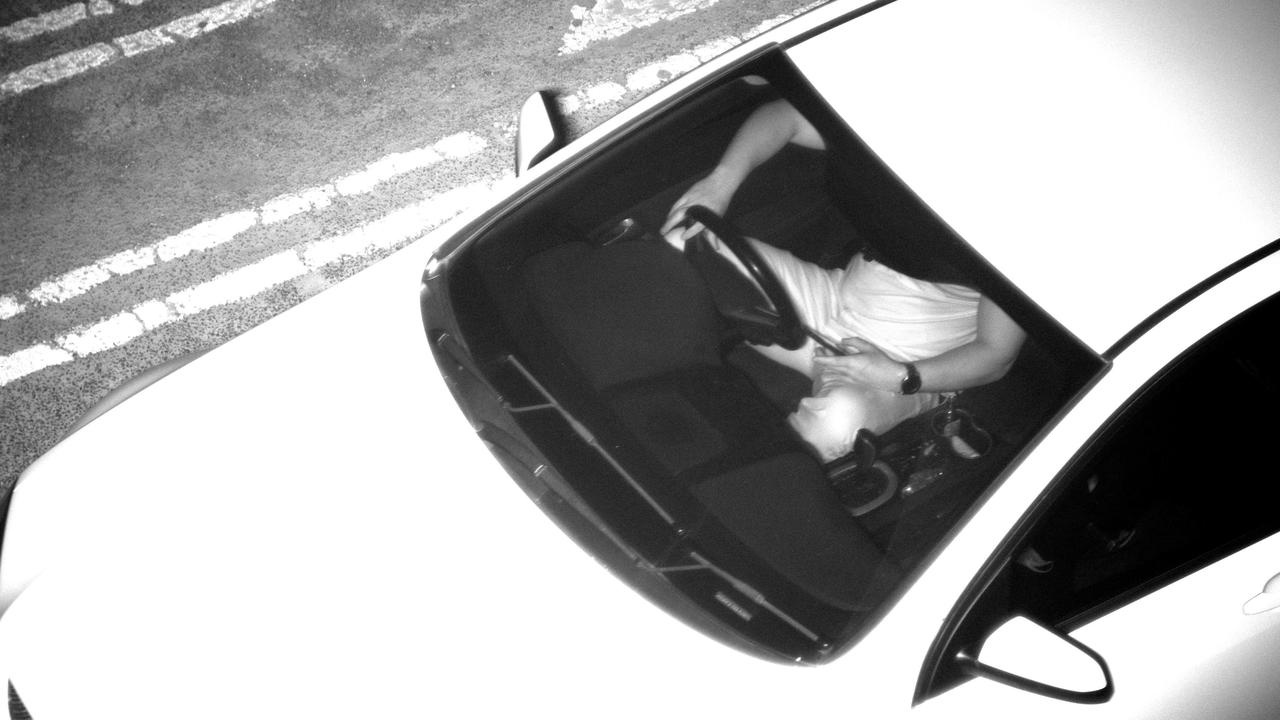WHAT WAS CLAIMED
Courts cannot accept images from mobile phone detection cameras if they have been zoomed in.
OUR VERDICT
False. Zooming in on a digital image is not a type of alteration that would concern a court.
A life coach claims to have found a legal loophole that can help people avoid fines from roadside mobile phone detection cameras.
The strategy, outlined in a Facebook video (archived here) by so-called legal advisory group Know Your Rights, says images from roadside cameras cannot be used as evidence in court if they have been zoomed in. According to Mike Palmer, the group's founder, this equates to tampering with evidence.
But legal experts have told AAP FactCheck that the claim is nonsense, and that enlarging a photo is not a form of alteration that would concern a court.

Cameras that target illegal phone use by drivers have been in use across NSW since March 1, 2020, and have been approved for use in Victoria. These cameras scan passing vehicles and detect mobile phone use, non-use of seatbelts, speeding and the driving of unregistered vehicles.
If detected using a mobile, drivers can receive fines and demerit points — but the Know Your Rights video claims none of these penalties should stand in court, if images used as evidence are "altered" by zooming in.
In the video, Mr Palmer first revisits a false claim about all fines being nullified because of a change to the Queen's title in 1973, which AAP FactCheck has already debunked.
From the 19min 50sec mark, Mr Palmer specifically addresses fines resulting from mobile phone camera detection.
"For any camera fine, for them to be able to rely on that photo as evidence, they have to be able to provide evidence that the photo could not have been altered or tampered with in any way otherwise it simply can't be used as evidence against you," he claims.
He tells his followers that the police would need to enhance the image to establish whether you are holding a phone or in fact a wallet or "phone-shaped cookie".
He adds: "The only way they can establish exactly what it is is by zooming in or enhancing the photo, which of course is exactly what they do. But the problem is by enhancing the photo they are automatically admitting to altering it or tampering with it so it can no longer actually be used as evidence against you, and of course without that evidence there is simply no case to answer."

Distinguished Professor Katherine Biber, a legal scholar and criminologist at University of Technology Sydney, told AAP FactCheck that zooming in on a digital image would not concern a court.
"If there were alterations that created distortions, or which gave rise to unreliable interpretations of an image, these would concern a court," Prof Biber said. "Courts have moved swiftly from accepting analogue images to digital ones … and courts are able to hear expert evidence to enable them to be more confident that the evidence admitted has been reliable, probative and fair."
When asked if this applies only to NSW or Australia more generally, Prof Biber confirmed "[these principles] operate across all of Australia".
"NSW has laws of evidence that are uniform with some jurisdictions (the Commonwealth, ACT, Tas, Vic, NT) and other jurisdictions have different laws of evidence (albeit largely similar). There are no meaningful differences, though."
Professor David Hamer, an expert in evidence law at the University of Sydney, told AAP FactCheck the claim is nonsense, stating "there is no fundamental difference between an original photo and a part of the photo that has been enhanced or magnified".
He added: "The original photo itself is the product of technology, and the enhanced image is simply the product of perhaps a little more technology."

Prof Hamer cited Uniform Evidence Law, a model legislation which several jurisdictions have adopted, often with little variation.
He described it as "very permissive" in terms of parties submitting documentary evidence. He said zooming into an image would be deemed perfectly acceptable.
He also pointed to section 138 and 140 of the Road Transport Act 2013 for NSW, adding that there was similar legislation in other jurisdictions.
Mr Palmer also makes another claim in the video. He states that a court would have to throw out the case against you if you ask for the "true informant" to take the stand.
"They've got one of two options," Mr Palmer says. "They can put the true informant on the stand, which obviously they can't bring the camera in and put it on the stand or they are going to deny you natural justice. Well, they are not going to deny you natural justice so they've only got one other option which is to dismiss the charge."
Prof Hamer also rejected this claim, stating the law makes provisions for the admissibility of photographic evidence. In NSW he cited section 138, 140 and 141 of the Road Transport Act 2013.
Prof Biber said that courts have been dealing with visual evidence for more than 100 years and have been open to "the affordances of evidence produced by cameras".
She added: "Surveillance technologies now frequently operate without human control, and courts have been open and accommodating of these technologies, albeit they remain concerned with reliability and fairness."
Prof Biber said many decisions show that courts now regard digital imagery as even more reliable than human witnesses.
The Verdict
The claim that courts cannot accept images from mobile phone detection cameras if they have been zoomed in is false.
Legal experts say there is no basis in law to support the idea that zooming in amounts to "altering" or "tampering" evidence. Current laws are very permissive in terms of submitting documentary evidence and zooming would be deemed perfectly acceptable, experts told AAP FactCheck.
False – The claim is inaccurate.
AAP FactCheck is an accredited member of the International Fact-Checking Network. To keep up with our latest fact checks, follow us on Facebook, Twitter and Instagram.












